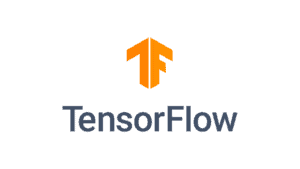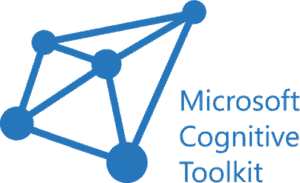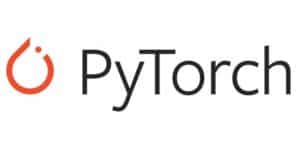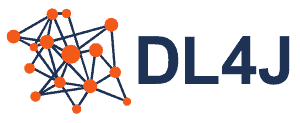1. 简介
本文将介绍一些主流的开源神经网络库。这些库通常用于在程序中实现神经网络模型。随着深度学习的发展,越来越多的框架被开发和优化,以简化模型的构建与部署。接下来我们将逐一介绍这些库的特点和使用场景。
2. TensorFlow
TensorFlow 是由 Google Brain 团队于 2015 年开发的开源框架。它主要用于机器学习和神经网络模型的构建,具备强大的模型构建能力与部署支持:

TensorFlow 支持 Windows、Linux、macOS 和 Android 平台,适合初学者和专家使用。一些使用 TensorFlow 的公司包括 Google、DeepMind、AirBnB、可口可乐和 Intel。
✅ 优势:
- 支持可视化工具 TensorBoard
- 社区活跃,文档丰富
- 支持跨平台部署
❌ 劣势:
- 缺乏商业支持
- 相比 CNTK 性能略慢
- 预训练模型较少
3. CNTK(Microsoft Cognitive Toolkit)
CNTK 是微软开发的深度学习框架,原名 Microsoft Cognitive Toolkit,于 2016 年发布,现已停止维护。它专注于训练神经网络模型,适用于深度学习任务:

CNTK 支持构建常见的神经网络结构,如卷积神经网络(CNN)和循环神经网络(RNN)。
✅ 优势:
- 支持多机扩展
- 资源管理高效
- 提供预训练模型
❌ 劣势:
- 缺乏可视化功能
- 社区支持较弱
- 对初学者不够友好
4. PyTorch
PyTorch 是 Facebook 的 AI 研究实验室于 2016 年推出的深度学习框架,基于 Torch 库开发。它强调从研究原型到生产部署的快速转化:

PyTorch 支持分布式训练、云平台部署,并拥有丰富的生态系统。目前支持 Windows、Linux 和 macOS 系统,被斯坦福大学和 Udacity 等机构广泛使用。
✅ 优势:
- 模块化设计,灵活性强
- 提供调试工具
- 丰富的预训练模型
❌ 劣势:
- 缺乏商业支持
- 文档不够完善
- 缺少可视化接口
5. Theano
Theano 是由蒙特利尔学习算法研究所(MILA)于 2007 年发布的开源库。它主要用于数学表达式计算,是早期深度学习研究的重要工具之一。

Theano 提供了 Python 接口,并常与 Keras 配合使用。
✅ 优势:
- 支持多种数学运算
- 可与 Keras 集成
❌ 劣势:
- 性能不够强大
- 开发已停止
6. Caffe
Caffe 是由伯克利 AI 研究组于 2013 年开发的深度学习框架,强调速度和模块化设计。它主要用于图像分类和图像分割任务:

目前支持 Linux、macOS 和 Windows 平台。
✅ 优势:
- 提供大量预训练模型
- 图像处理支持优秀
❌ 劣势:
- 缺乏商业支持
- 开发进展缓慢
7. Keras
Keras 是 Google 工程师 Francois Chollet 于 2015 年开发的深度学习 API,提供用户友好的接口,适合快速实验:

Keras 可运行在 TensorFlow、Theano 和 CNTK 等后端之上,被 NASA、CERN 等机构广泛采用。
✅ 优势:
- 可与其他框架集成
- 入门门槛低
- 提供预训练模型
❌ 劣势:
- 低级 API 不够灵活
- 错误调试困难
8. DeepLearning4J
DeepLearning4J 是一个专为 Java 和 Scala 设计的深度学习框架,于 2014 年发布。它支持分布式训练,能显著提升性能:

DeepLearning4J 支持 Windows、Linux 和 macOS,并可与 TensorFlow、Keras 等库集成。
✅ 优势:
- 支持分布式计算
- 可组合多种模型
- 提供预训练模型
❌ 劣势:
- 仅限 Java/Scala 使用
- 社区活跃度较低
9. 对比总结
以下是对上述框架的优缺点对比:
| 框架 | 优点 | 缺点 |
|---|---|---|
| TensorFlow | ✅ 提供 TensorBoard 可视化 ✅ 强大的计算能力 ✅ 文档完善,社区活跃 |
❌ 无商业支持 ❌ 相比 CNTK 更慢 ❌ 预训练模型较少 |
| CNTK | ✅ 提供预训练模型 ✅ 多机扩展性强 ✅ 资源管理高效 |
❌ 无可视化功能 ❌ 社区支持弱 ❌ 不适合新手 |
| PyTorch | ✅ 模块化设计 ✅ 丰富的预训练模型 ✅ 提供调试工具 |
❌ 无商业支持 ❌ 文档不完善 ❌ 无可视化接口 |
| Theano | ✅ 提供预训练模型 ✅ 可与 Keras 集成 |
❌ 性能不强 ❌ 开发已停止 |
| Caffe | ✅ 提供预训练模型 ✅ 图像处理支持优秀 |
❌ 无商业支持 ❌ 开发进展缓慢 |
| Keras | ✅ 支持多种后端 ✅ 上手简单 ✅ 提供预训练模型 |
❌ 低级 API 不灵活 ❌ 错误调试困难 |
| DeepLearning4J | ✅ 支持分布式计算 ✅ 可组合模型 ✅ 提供预训练模型 |
❌ 仅限 Java/Scala ❌ 社区活跃度低 |
10. 结论
本文介绍了目前主流的开源神经网络库,包括它们的功能、优势与适用场景。开发者可根据项目需求、语言偏好和部署环境选择合适的框架。对于 Java 开发者来说,DeepLearning4J 是一个不错的选择,而 Python 用户则更倾向于使用 TensorFlow 或 PyTorch。